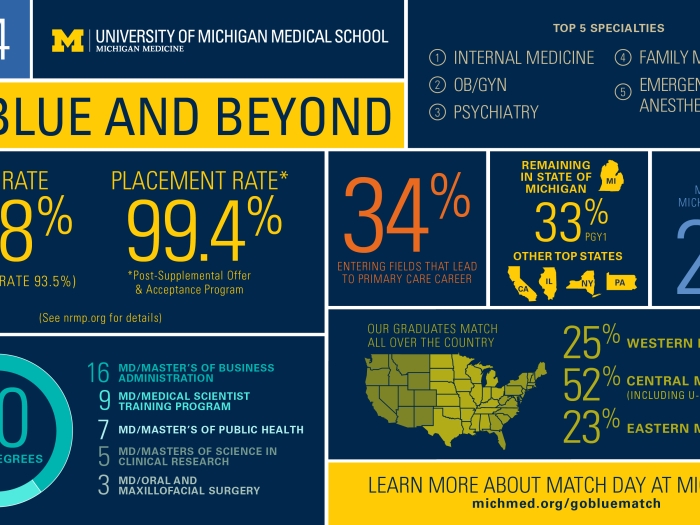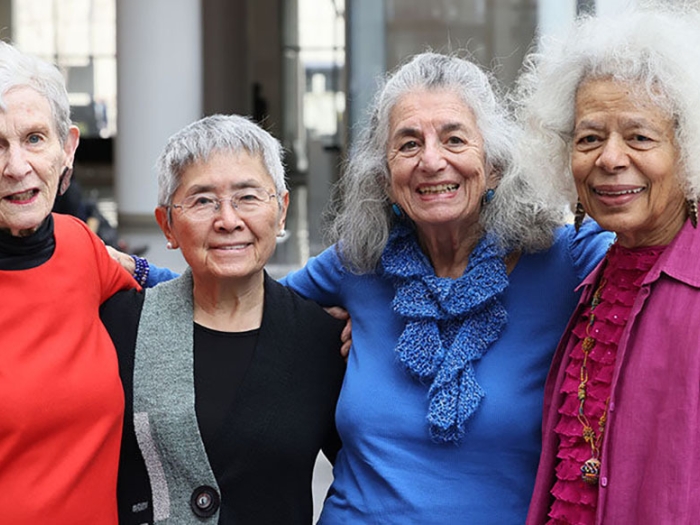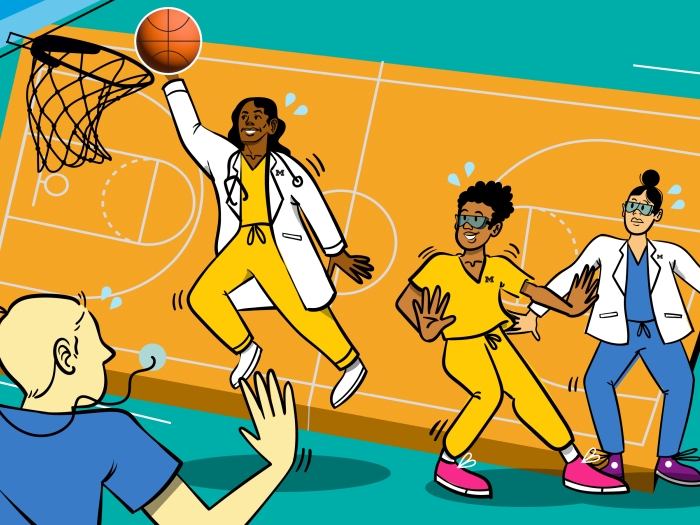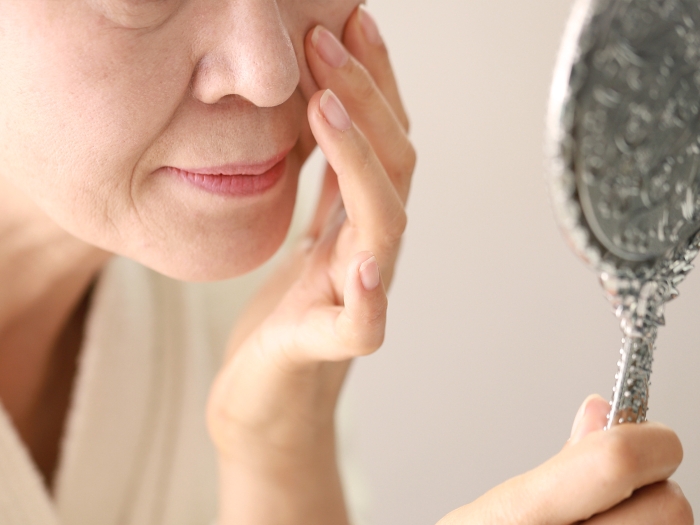Pair of new studies in first year residents shows some encouraging trends, varied experiences, increased recognition of harassment
3:30 PM
Author |

More than half of all new doctors face some form of sexual harassment in their first year on the job, including nearly three quarters of all new female doctors and a third of males, a new study finds.
That’s actually down somewhat from the percentage of new doctors who experienced the same five or six years before, according to the paper published in JAMA Health Forum by a team from the University of Michigan Medical School and Medical University of South Carolina.
And today’s new doctors are more likely than their predecessors to recognize that what they experienced qualifies as harassment, whether it was gender biased comments or jokes, persistent unwanted romantic overtures, or pressure to engage in sexual activity for job related reasons.
But the new study and another paper published recently in JAMA Network Open suggest that medical schools and hospitals need to do more to educate about, and address, all forms of sexual harassment. Some institutions and specific medical specialties have more work to do than others, the research shows.
That’s especially true for profession related sexual coercion, which increased across the six years studied, though it was much rarer than gender based verbal or work environment harassment.
In all, more than 5% of female first-year residents, also called interns, said in 2023 that they had been in a situation where they felt pressured to engage in a sexual activity to get favorable professional treatment. That was more than double the percentage who said so in 2017. The rate in men stayed the same, at less than 2%.
“The overall decrease in sexual harassment incidence over recent years suggests a move in the right direction, however rates of sexual harassment experienced by physician trainees are still alarmingly high,” said Elena Frank, Ph.D., lead author of the new study and an assistant research scientist at the Michigan Neuroscience Institute.
The findings come from surveys of thousands of doctors who took part in the Intern Health Study, based at the institute. Each summer, the study enrolls thousands of recent medical school graduates who volunteer to take a variety of smartphone based surveys and wear activity trackers for their entire intern year.
Recognizing harassment
The new JAMA Health Forum study includes data from nearly 4,000 doctors who finished intern year in 2017, 2018 or 2023. In addition to being asked a general question about whether they had experienced sexual harassment, they were also asked whether and how often they had had specific experiences that qualify as gender based harassment, unwanted sexual attention and sexual coercion.
That allowed the researchers to measure interns’ recognition of what constitutes sexual harassment. To do so, they analyzed how many interns said they had had at least one of those specific experiences and compared that with each person’s answer on the general question of whether they’d experienced sexual harassment.
In all, 55% of the interns in the 2023 group had experienced at least one form of sexual harassment. But only about 18% of that group recognized that they had experienced sexual harassment, and there was a big gap between women and men in recognition.
Recognition of what constitutes sexual harassment has improved, the study shows; in 2017 less than 9% of those who had a sexual harassment experience recognized it as such. Recognition improved fivefold in surgical specialties.
“The persistent gap between the experience and recognition of sexual harassment identified in our study illustrates the importance of looking beyond policy compliance, to challenge the deeply entrenched cultural norms that have enabled sexual and gender based harassment to continue largely unquestioned in medicine for so long,” said Frank, who directs the Intern Health Study team. The #MeToo movement for sexual harassment awareness and prevention has likely made a difference too.
Variation in experiences
The team explored differences between types and locations of medical training in their JAMA Network Open paper, which is based on 2,000 interns who finished intern year at 28 institutions in 2017.
Interns training in surgery and emergency medicine were 20% more likely than those training in pediatrics or neurology to have experienced sexual harassment in 2017. And interns at some hospitals were 20% more likely to have experienced sexual harassment than those at hospitals with the lowest number of interns reporting any sexual harassment.
Elizabeth Viglianti, M.D., M.P.H., M.Sc., lead author of the JAMA Network Open study and an assistant professor of internal medicine at U-M, notes that the variation between specialties and institutions seen in the study she led suggests that residency programs and hospitals play a key role in combating harassment.
SEE ALSO: Study in residents shows high prevalence of sexual harassment, yet low reporting rates
She notes that surgical training programs, which include general surgery and specialties that include surgical training -- such as gynecology, urology, otolaryngology, neurosurgery, plastic surgery and orthopedic surgery -- have the most work to do.
“Until administrators, faculty, and trainees truly understand that sexual harassment is not and should not be an expected or accepted part of the training experience, an equitable and safe learning environment for physicians cannot be achieved,” Frank said.
Additional authors: In addition to Frank and Viglianti, the authors of the two papers include Intern Health Study co-investigator Constance Guille, M.D., of the Medical University of South Carolina; Intern Health Study principal investigator Srijan Sen, M.D., Ph.D., who is also the director of the Eisenberg Family Depression Center and a professor of psychiatry and neuroscience at U-M; other U-M faculty Amy Bohnert, Ph.D., M.H.S., Andrea Oliverio, M.D., M.Sc., and Lisa Meeks, Ph.D. as well as Intern Health Study team members Zhuo Joan Zhao, M.S., Yu Fang, M.S.E., Jennifer Cleary, a doctoral student in psychology at U-M, and Karina Pereira-Lima, a postdoctoral fellow at U-M.
Funding: The Intern Health Study is funded by the National Institute of Mental Health (MH101459). Additional NIH funding was also used for the two studies.
Citation: Trends in Sexual Harassment Prevalence and Recognition During Intern Year, JAMA Health Forum, doi:10.1001/jamahealthforum.2024.0139
Sign up for Health Lab newsletters today. Get medical tips from top experts and learn about new scientific discoveries every week by subscribing to Health Lab’s two newsletters, Health & Wellness and Research & Innovation.
Sign up for the Health Lab Podcast: Add us on Spotify, Apple Podcasts or wherever you get you listen to your favorite shows.

Explore a variety of healthcare news & stories by visiting the Health Lab home page for more articles.

Department of Communication at Michigan Medicine

Want top health & research news weekly? Sign up for Health Lab’s newsletters today!





